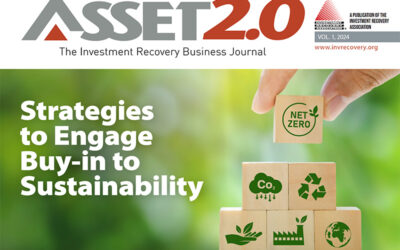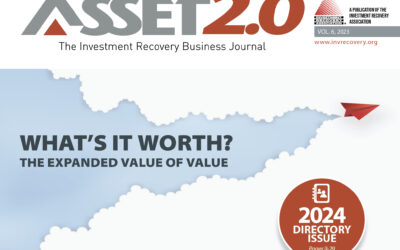You are sitting at your desk, toiling over the daily reports, when your inbox chimes. You’ve just received a notice from one of your internal customers that he has a nice piece of machinery that needs to be sold in a short time frame. All of the required releases and specifications are attached to the email but none of the financial information (original purchase price or net book value) is included. You are free to market the asset but you don’t normally deal in these assets and don’t have much experience with their sale. Fortunately for you, one of your peers in the Investment Recovery Association has just given you the name of a dealer who buys just these types of assets. You call the dealer to let him know the asset is available and to gauge his interest in the unit. The dealer is very interested in the unit and asks, “How much do you want for it?” Your answer, “Ah, let me get back with you on that.”
Has this ever happened to you? What do you do now?
When determining the fair market value (FMV) of any asset, there are several approaches that are used regularly. They are the cost approach, market approach, income approach and, occasionally, the Scientific Wild Axe Guess (SWAG) approach. The first three mentioned are generally accepted approaches taught by the American Society of Appraisers and supported by the Investment Recovery Association. The fourth, while in general use in the industry, is less formalized, and we won’t go into much detail on it. Appraisals are always marked by time. Values fluctuate for a number of reasons, such as supply, demand, changes in regulations and the level of technology. Any opinion of value must be tied to a certain date.
The Cost Approach relies on the Principle of Substitution, which states that an informed buyer will not pay more for a used asset than for a new asset of similar utility. This means that the upper limit of value starts with the replacement cost new (RCN) of a similar unit. Starting with the RCN, the value is depreciated (adjusted) based on its physical condition, functional considerations (inherent in the asset itself) and economic considerations (external to the asset). The RCN is typically depreciated in the order stated above, keeping in mind that 0% depreciation in any category is a possibility. Physical depreciation can be estimated through a physical inspection of the asset, by interviewing operators or maintenance personnel, or by evaluating the normal life of the unit compared to its actual age (age/life comparison).
Functional depreciation may be considered in the cases of lower production capacity than a new unit, the cost to upgrade to more efficient controls, excess capacity or other aspects of asset that may detract from or enhance its value. Economic depreciation is typically considered as separate from the asset itself. A change in a government regulation that requires stricter emission controls is an often-cited example.
The Market Approach is based on the assumption that data from actual sales of identical or comparable (similar) assets is an indication of the FMV. This approach is best used for assets that have an active market with published results. In this approach, sales of exact matches (age, condition, production, size, etc.) to the subject will provide the best indication of value. However, it is rare to find exact matches, so the appraiser must adjust the comparables to match the subject. The art of this approach is taking advantage of experience to quantify the adjustments. While there is no standard, the amount of an adjustment for each aspect of pertinent data (year of age, condition, sale channel, etc.) must be determined and noted by the appraiser.
The Income Approach requires that the subject assets’ earning capacity be investigated and that the present value is supported by the expectation of future earnings. This approach is seldom used for individual pieces of machinery because it is difficult to assign income to any particular fixed asset. Finally, the SWAG approach is much more subjective than objective. My one note regarding this approach is that if in the example above, there is a long silence after you state your asking price, it might be advantageous to add, “But that price could be negotiable.”



